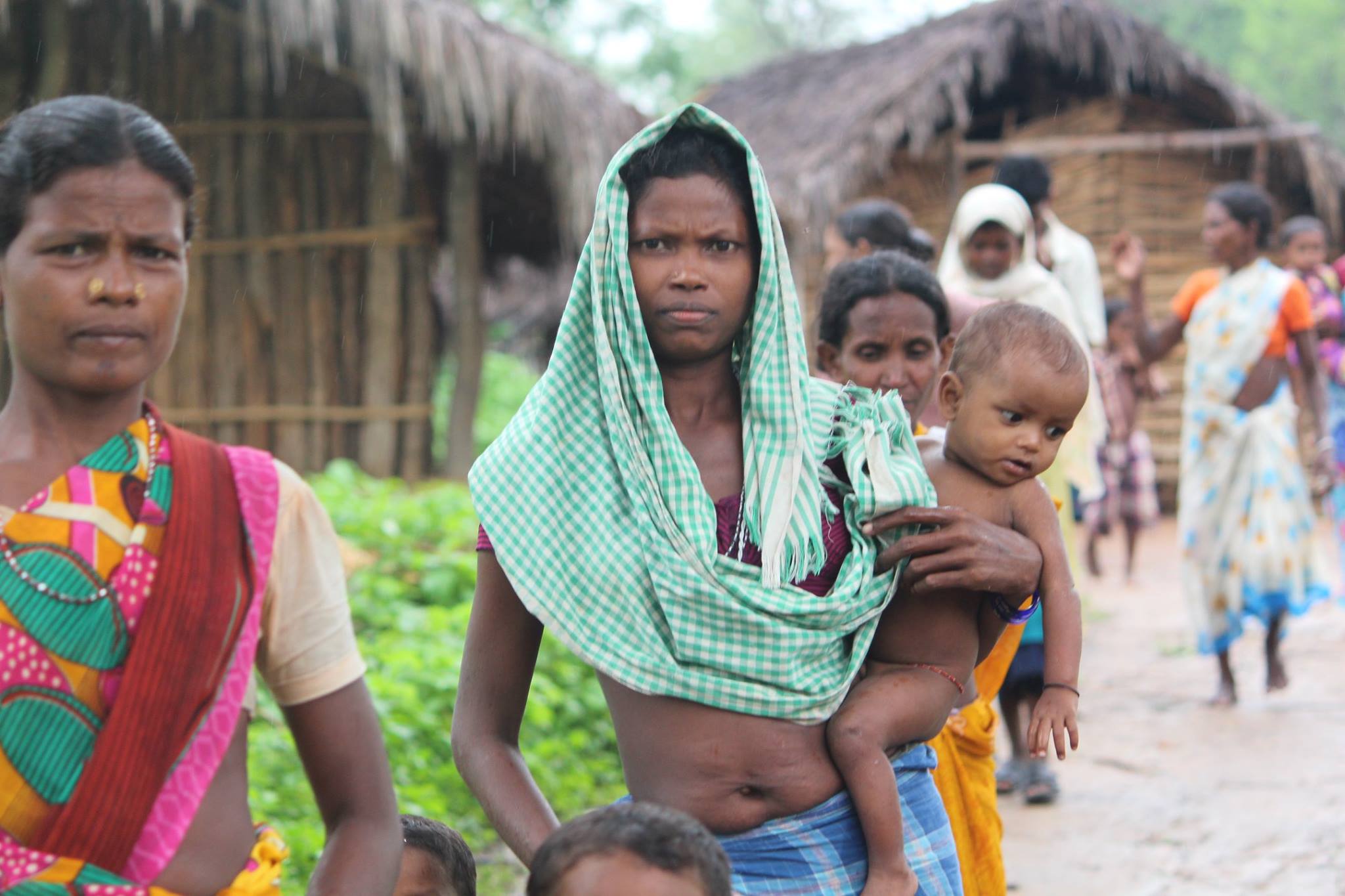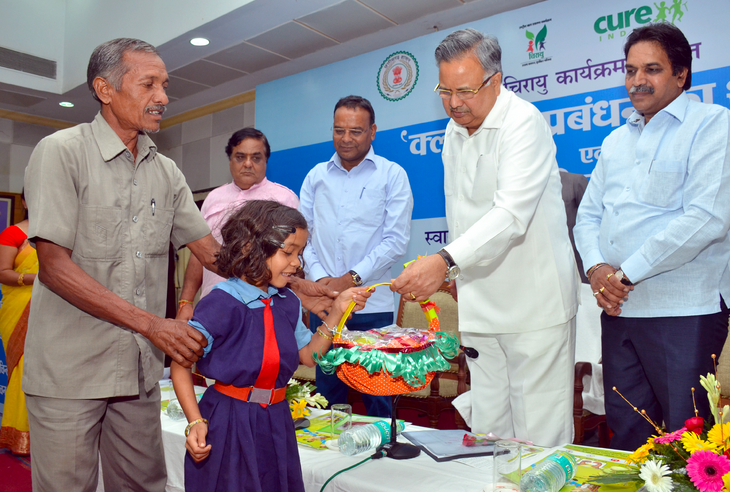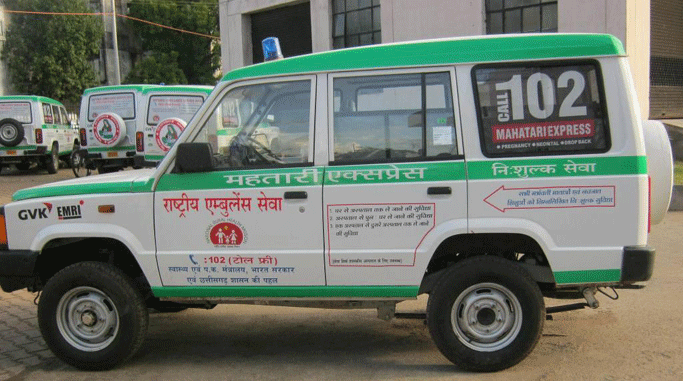From ‘Nothing’ to Setting Benchmarks: How Chhattisgarh Revolutionalised Healthcare
Here's the story of an Indian state, which started from the scratch to emerge as one of the fastest growing states in the country and showcase a formidable growth story in terms of its medical and healthcare sector.

This article is sponsored by the Government of Chhattisgarh.
In 2003, Chhattisgarh had a serious crisis on its hand. After having just started out as a newly formed state in 2000, the infant mortality rate (IMR) and maternal mortality rate (MMR) stood at a seriously worrisome statistic: 70 deaths per 1000 live births and 365 deaths per 1 lakh deliveries!
It wasn’t just mother and child healthcare that Chhattisgarh had in its vestibule of worries. Various other areas had also remained unaddressed.
Basic healthcare provisions weren’t available across most districts in the state. This especially included far-flung topographies and densely forested regions that were also subjected to insurgency and related violence thanks to Left Wing Extremism (LWE).
Another grave concern was the rejection of modern healthcare practices by the tribal populace, who continued to rely on their ancient traditions and practices for diseases and pregnancies, resulting in an increasing number of fatalities that could have been prevented with timely intervention.

Penetrating through this wilderness and establishing basic healthcare facilities along with dedicated practitioners and staffs on call was a behemoth task the state had to achieve and overcome, which only had one nursing college in Raipur across its entire jurisdiction at the time.
15 years down the line, there has been significant, and in many cases absolutely remarkable, progress in Chhattisgarh. For example, there has been 50 per cent drop in mother-child mortalities by 2017!
So, how did a state that had to start from the scratch in almost every department manage to emerge as one of the fastest growing states in the country and showcase a formidable growth story in terms of its medical and healthcare sector?
We can begin that story with the government of India’s Accredited Social Health Activist or ASHA programme, in which each village across the country has a group of trained female community health workers who act as an interface between the community and the public health system.
Interestingly, this mission, which fell in place in 2005, is known to have been inspired from Chhattisgarh’s Mitanin programme, where local women were identified from every village and hamlet and trained efficiently by medical authorities to bridge the wide gap in the state’s health care system and the people. The programme is still prevalent in Chhattisgarh with a total of 70,000 functionaries operating across the state.
It is believed to be one of the most successful initiatives by the healthcare department by far, especially in overcoming casualties arising from unscientific practices and self-medication in tribal regions.

Because these women belonged to the very same community that they were catering to, the people found it easier to trust and follow their guidelines—a breakthrough that government authorities have not been able to achieve elsewhere.
This programme has managed to significantly bring down IMR and MMR because of constant follow-up by the Mitanins (which means a female friend in Chhattisgarhi). It has also helped keep a tab on mother-child nutrition before and after the childbirth as well as anaemia.
This is just an example, one of many, how the state was and continues to be on the cutting edge of healthcare policy in India.
Some other innovative healthcare schemes unfurled in Chhattisgarh include the corneal blindness free scheme, Chirayu Yojana, Kayakalp Yojana, Health Helpline, Mahtari Express, Muktanjali Sewa, and last but not the least, Janm Sahyogi scheme.
The blindness free scheme aims to bring vision to 1,25,000 identified beneficiaries in the state with either partial or complete impairment through free eye transplants and has teamed up with Sight Life, a non-profit organisation that has further made arrangements for procuring donated eyes from states like Gujarat, Punjab and Haryana.
The Chirayu Yojana focuses on children’s health and nutritional intake through regular checkups at Anganwadis and government school up until the age of 18.

This programme has helped identify children between 0-15 years with heart ailments from rural and remote regions, who are then provided with required intervention or even corrective surgeries at top medical facilities for free under Mukhyamantri Bal Hriday Suraksha Yojana or Chief Minister Child Heart Scheme for children. Over 6000 children from BPL and APL category have benefitted from this scheme as of 2017.
Today, the state has over 793 primary health centres and 5200 sub-health centres, all of which are due to be transformed into health and wellness centres by 2025, in adherence to PM Modi’s ambitious healthcare vision, Ayushmaan Bharat for the country.
While 650 of these are already operational as HWCs, the department’s goal is to hit 800 by the end of this year.
You may also like: Blazing Ahead: All You Need to Know About Chhattisgarh
Chhattisgarh is also the first state to go live with the Pradhan Mantri Jan Arogya Yojana, the universal healthcare coverage scheme as announced by the PM on 15th August 2018. Through the PMJAY scheme, the government intends to provide free access to healthcare to the poorest of the poor in both public as well as private institutions.
While dedicating all their time and resources for the public is definitely commendable, the job of healthcare officials across all echelons is often thankless. As an appreciation and further motivation to continue their unparalleled commitment and services, the state government launched the Kayakalp Yojana, under which districts hospitals were awarded based on their performance across various parameters.
While the main objective of the scheme had been to inculcate a culture of cleanliness, infection control and hygiene practices in the facilities, they strategically managed to ensure these by incentivising and recognising facilities showing exemplary performance and thereafter sustaining such practices.
A major breakthrough, however, had been the launch of services like Health Helpline, Mahtari Express and Muktanjali service that managed to not just penetrate into areas previously considered off bounds, but also provide last mile connectivity for medical aid and supplies.

The toll-free number 104 is a statewide functional helpline operated by a dedicated call centre that acts as an interface for people to seek medical attention from medical specialists. This has been particularly beneficial for those living in remote areas and from where reaching the nearest health centre might not be a viable option.
Mahtari Express operates as a free ambulance service for expecting mothers by helping them reach hospitals or health centres by dialling 102. About 360 vehicles operate across the state under this scheme.
The department also has deployed mobile medical units across remote, tribal areas. These units have medical representatives on board with medical paraphernalia for basic ailments.
The units make rounds of designated areas with information from the Mitanins, which helps them reach out to more people efficiently. The same provision is present in urban slum precincts with 30 vehicles in operation.
The Janm Sahyogi scheme is another revolutionary initiative put forth by the Chhattisgarh government for expecting mothers, under which one female companion can accompany the patient to the hospital and remain present throughout the delivery process.

The objective is to make mothers feel safe in the company of someone they know, through their moments of extreme labour and discomfort—preferably a mother, sister or even a friend; hence the name Janm Sahyogi!
You may also like: Atal Nagar, Raipur & Bilaspur: Chhattisgarh’s Smart Cities Are Redefining India
Chhattisgarh has come a long way from where it stood in terms healthcare services since its statehood in 2000. Progressing the right way forward, the various schemes employed by the state are gradually helping Chhattisgarh reach out to all its inhabitants through better medical access and services.
This is a benchmark that other states struggling with their healthcare policies can surely learn from.
Like this story? Or have something to share?
Write to us: [email protected]
Connect with us on Facebook and Twitter.
If you found our stories insightful, informative, or even just enjoyable, we invite you to consider making a voluntary payment to support the work we do at The Better India. Your contribution helps us continue producing quality content that educates, inspires, and drives positive change.
Choose one of the payment options below for your contribution-
By paying for the stories you value, you directly contribute to sustaining our efforts focused on making a difference in the world. Together, let’s ensure that impactful stories continue to be told and shared, enriching lives and communities alike.
Thank you for your support. Here are some frequently asked questions you might find helpful to know why you are contributing?


This story made me
-
97
-
121
-
89
-
167











